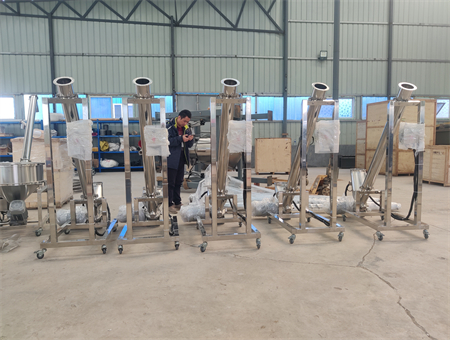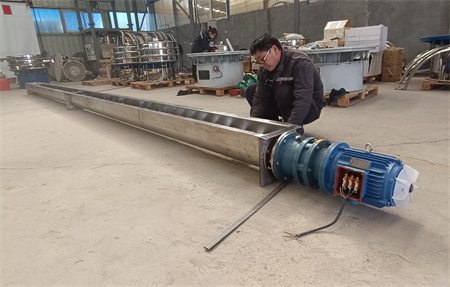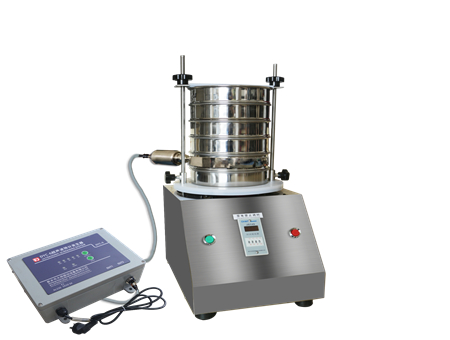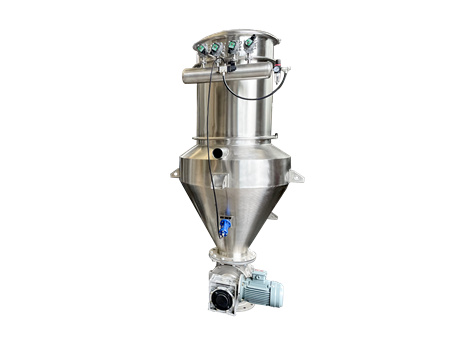A
screw conveyor is a conveying device that uses the rotation of spiral blades to push loose materials forward along the casing.

1、 Structure of
screw feeder
It is composed of driving device, casing, cover plate, spiral shaft, spiral blade, feeding port, feeding port, and other components.
1. Spiral blade: It can be divided into several forms, including full blade type, belt blade type, paddle type, toothed type, etc.
Full blade type: With simple structure and strong conveying capacity, it is suitable for conveying dry particles or powder materials, and has good dispersion performance. It is a widely used blade type.
Paddle type spiral blade: It has a strong mixing and stirring effect while completing the conveying operation. For example, used for circular sieves, separating blades and kernels of milling machine mixers.

The blade type and tooth type are less commonly used in oil processing plants.
2.
Enclosures: There are two forms of "U" row enclosures and circular enclosures, with circular enclosures mainly used as raw materials for sealing equipment. The twisted dragon of a circular casing is also known as a sealed twisted dragon.
3.
Screw shaft: hollow, made of steel pipe, with high strength, light weight, and convenient connection. Use a small section of solid shaft at the connection between the shaft and where bearings are installed. Extend the solid shaft into the hollow shaft at the connection point, and use high-strength bolts to thread in the direction perpendicular to each other between the hollow shaft and the solid shaft, fixing the connecting screw shaft.

2、
Characteristics of screw conveyors
Advantages: Simple structure, low manufacturing cost, convenient maintenance, good sealing of the machine tank, multi-point feeding and unloading, one conveyor can simultaneously transport materials in two directions, and during the transportation process, it can also carry out processes such as mixing, stirring, loosening, heating, and cooling of materials.
Disadvantages: During the transportation process, the friction between the material and the shell and the spiral body, as well as the stirring and flipping of the spiral body on the material, leads to easy wear of the groove and spiral blades, and has a certain crushing effect on the material, resulting in high power consumption during transportation. The screw conveyor is sensitive to overload and needs to be fed evenly, otherwise it can easily become clogged. When the screw conveyor is tilted or vertically arranged, its conveying efficiency will be greatly reduced; The conveying length is limited.
Therefore, it is commonly used for horizontal short distance transportation. The conveying length is generally less than 40m, and the vertical conveying height is generally not more than 8m; Not suitable for conveying long fiber like, hard, large blocks, easily bonded into blocks, and easily broken materials.





